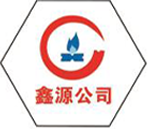
Oct . 16, 2024 18:28
Back to list
Electric Control Valve for Precise Flow Regulation in Industrial Applications
Understanding Electric Regulating Valves Functionality and Applications
Electric regulating valves are integral components in various industrial processes, serving the crucial role of controlling the flow and pressure of fluids. These valves are designed to provide precise regulation, ensuring optimal performance and efficiency in systems ranging from heating and cooling to chemical processing and water treatment. This article explores the functioning of electric regulating valves, their types, key advantages, and applications across different fields.
Functionality of Electric Regulating Valves
An electric regulating valve operates by adjusting the position of the valve actuator based on input signals from control systems. Typically, the actuator is paired with sensors and controllers that monitor parameters such as temperature, pressure, and flow rate. When these parameters deviate from the desired set point, the actuator responds by moving the valve to maintain optimal conditions.
The design of an electric regulating valve incorporates various components, including a valve body, actuator, and control system. The valve body can be of different types (e.g., globe, ball, or butterfly), depending on the application and required flow characteristics. The actuator, often electric in nature, provides the necessary force to open or close the valve effectively.
Types of Electric Regulating Valves
Electric regulating valves come in several types, each suited for specific applications. The most common include
1. Globe Valves Known for their excellent throttling capabilities, globe valves provide precise flow control and are frequently utilized in applications requiring accurate regulation.
2. Ball Valves Though traditionally used for on-off control, some electric ball valves are designed for proportional control, offering rapid response times and minimal pressure drop.
3. Butterfly Valves Ideal for large flow applications, butterfly valves use a rotating disc to control flow, making them suitable for processes where space is limited.
4. Pinch Valves These valves utilize a flexible sleeve that is pinched to control the flow of slurries or bulk materials and find applications in industries such as wastewater treatment.
Each of these valve types can be integrated with electric actuators and smart control systems, enhancing their performance and flexibility in managing fluid dynamics.
Advantages of Electric Regulating Valves
Electric regulating valves present several key advantages
electric regulating valve

- Precision Control They offer high levels of accuracy in flow control thanks to advanced actuators and sensors, enabling stringent process requirements to be met.
- Automation Compatibility With electric actuators, these valves can easily integrate into automated control systems, allowing for real-time monitoring and adjustments.
- Energy Efficiency By precisely controlling the flow and reducing wastage, electric regulating valves contribute to overall energy savings in industrial operations.
- Low Maintenance Electric actuators generally require lower maintenance compared to pneumatic systems, as they have fewer moving parts and do not require compressed air.
- Robustness and Durability Built to withstand harsh operational environments, electric regulating valves are designed for longevity and reliability.
Applications of Electric Regulating Valves
The versatility of electric regulating valves makes them suitable for a wide range of applications across industries. Some notable areas include
- HVAC Systems Used in heating, ventilation, and air conditioning systems, these valves regulate chilled water and steam to maintain desired building temperatures.
- Water Treatment In municipal and industrial water treatment facilities, electric regulating valves control the flow of chemicals and treated water through filtration and disinfection processes.
- Chemical Processing In the chemical industry, these valves manage the flow of reactants and product streams, ensuring safety and efficiency in operations.
- Oil and Gas Electric regulating valves are employed in pipelines and refineries to control the flow of crude oil, natural gas, and various other fluids.
Conclusion
Electric regulating valves are vital components in modern industrial systems, offering enhanced control, efficiency, and reliability. Their ability to adapt to various process requirements makes them indispensable in multiple applications, ensuring that industries can meet the demands of an ever-evolving marketplace. As technology continues to advance, the integration of smart systems with electric regulating valves will further revolutionize fluid control processes, driving innovation and efficiency in numerous sectors.
Latest news
-
Safety Valve Spring-Loaded Design Overpressure ProtectionNewsJul.25,2025
-
Precision Voltage Regulator AC5 Accuracy Grade PerformanceNewsJul.25,2025
-
Natural Gas Pressure Regulating Skid Industrial Pipeline ApplicationsNewsJul.25,2025
-
Natural Gas Filter Stainless Steel Mesh Element DesignNewsJul.25,2025
-
Gas Pressure Regulator Valve Direct-Acting Spring-Loaded DesignNewsJul.25,2025
-
Decompression Equipment Multi-Stage Heat Exchange System DesignNewsJul.25,2025

